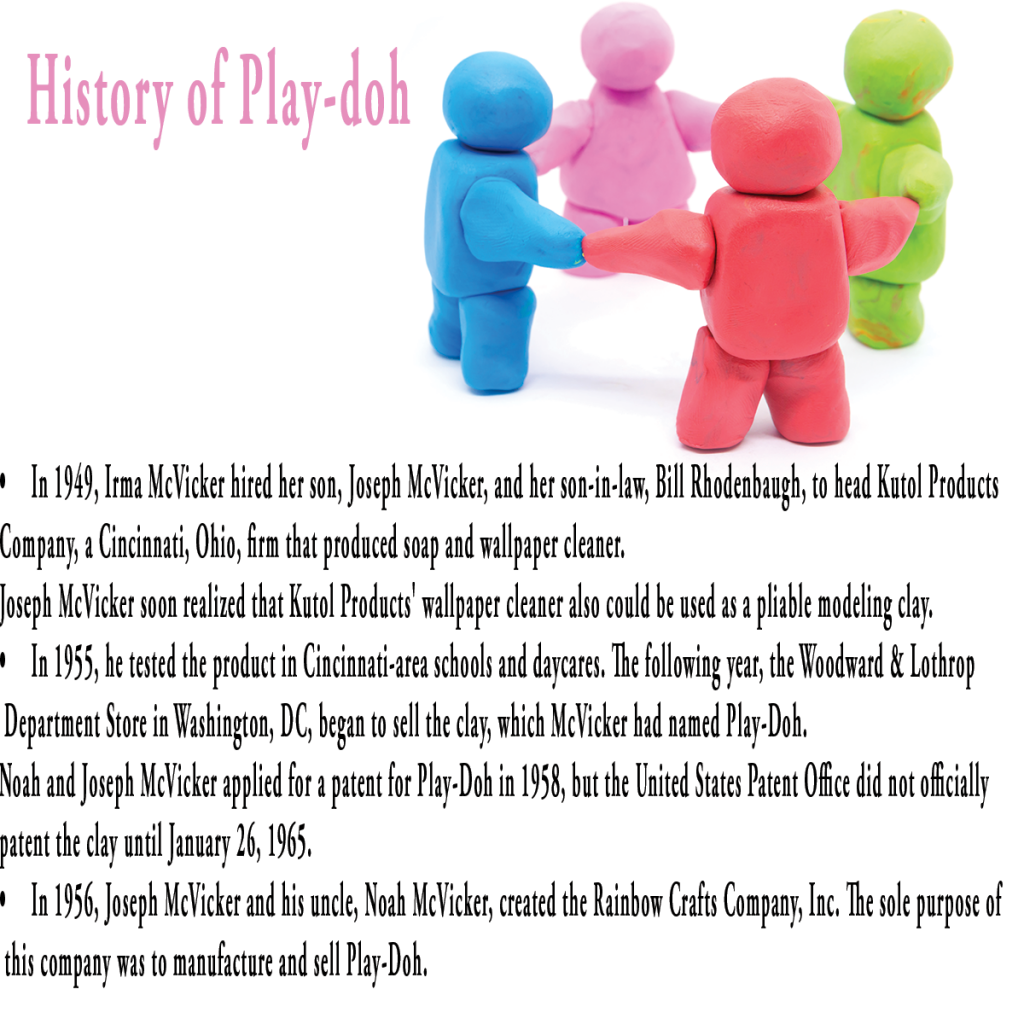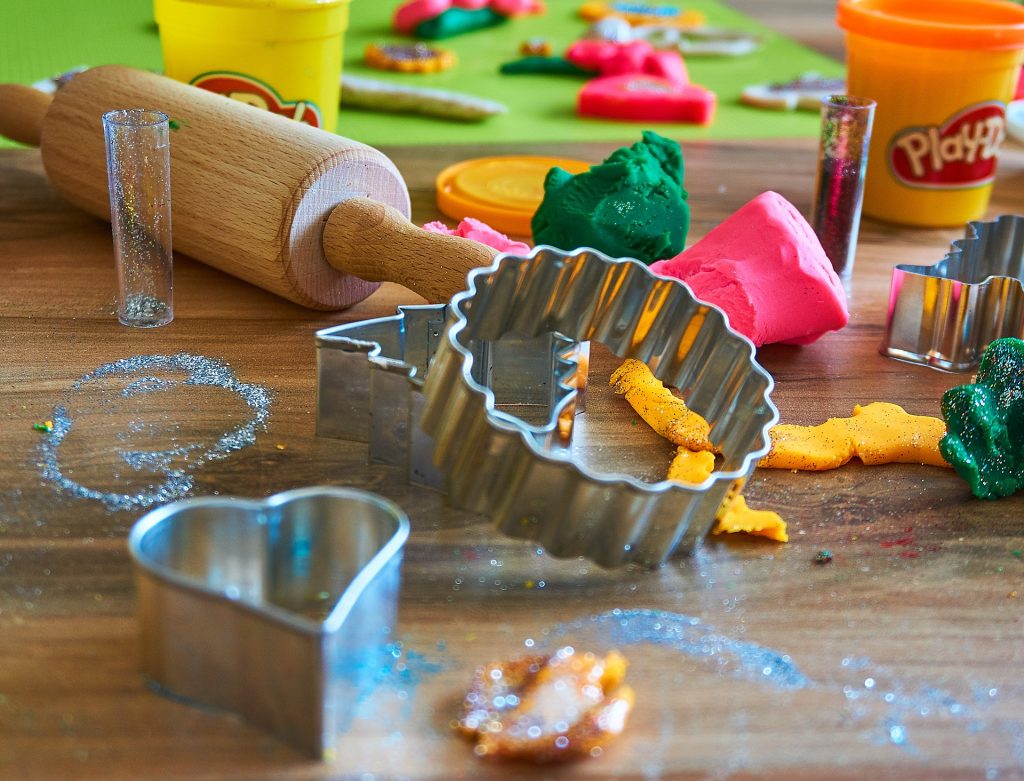 Play-doh is fairly ubiquitous. Where there are toddlers, there is Play-doh or a variant of it. It’s one of the most beloved fidget toys for those with sensory issues, meaning it’s making it’s way into older people’s desks so they have something to manipulate while they think. So, what’s the history behind this beloved toy?
Play-doh is fairly ubiquitous. Where there are toddlers, there is Play-doh or a variant of it. It’s one of the most beloved fidget toys for those with sensory issues, meaning it’s making it’s way into older people’s desks so they have something to manipulate while they think. So, what’s the history behind this beloved toy?- In 1949, Irma McVicker hired her son, Joseph McVicker, and her son-in-law, Bill Rhodenbaugh, to head Kutol Products Company, a Cincinnati, Ohio, firm that produced soap and wallpaper cleaner. Joseph McVicker soon realized that Kutol Products’ wallpaper cleaner also could be used as a pliable modeling clay.
- In 1955, he tested the product in Cincinnati-area schools and daycares. The following year, the Woodward & Lothrop Department Store in Washington, DC, began to sell the clay, which McVicker had named Play-Doh. Noah and Joseph McVicker applied for a patent for Play-Doh in 1958, but the United States Patent Office did not officially patent the clay until January 26, 1965.
- In 1956, Joseph McVicker and his uncle, Noah McVicker, created the Rainbow Crafts Company, Inc. The sole purpose of this companywas to manufacture and sell Play-Doh.
“Wow well you have a few facts right however your facts seem to be all coming from one source. And very opinionated. As the great grandaughter of Noah McVicker and the child of his oldest granddaughter who was amongst the first children to ever play with the constantly changing compound until it was deemed fit to ever enter a school building I have heard this story in a completly different way. Have you even tried to get facts from every side or just the ones who pout about not having their name on the on inventors list? The play doh compound was already being tested and Kay was simply asked to try it in her classroom. My aunts and uncles (his grandchildren) used to want to play with the stuff and that is when the idea came to NOAH MCVICKER to take out the toxins.”
(I say claimed because as we know anyone can claim to be anyone on the web. I have no verifiable proof that she is or isn’t. Regardless, it makes one pause to remember that not all facts are given in these secondary sources, and thus blanks are filled in regularly.)
Lessons learnt

